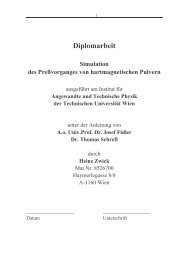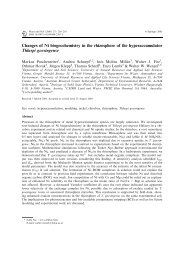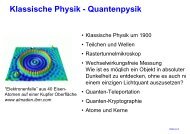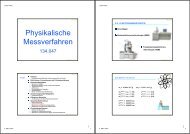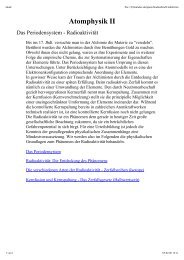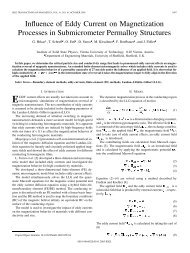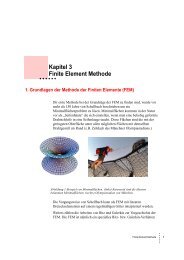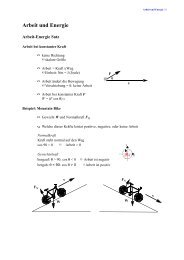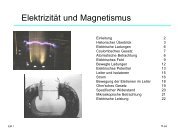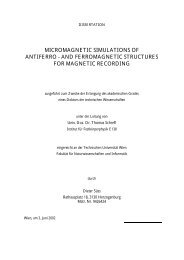Read Back Signals in Magnetic Recording - Research Group Fidler
Read Back Signals in Magnetic Recording - Research Group Fidler
Read Back Signals in Magnetic Recording - Research Group Fidler
You also want an ePaper? Increase the reach of your titles
YUMPU automatically turns print PDFs into web optimized ePapers that Google loves.
Numerical Methods<br />
j =−σgrad Φ.<br />
(4.42)<br />
With the calculated electric potential (4.41) we are able to determ<strong>in</strong>e the current distribution<br />
for each tetrahedron ijkl. Insert<strong>in</strong>g <strong>in</strong> (4.42) gives<br />
( grad grad grad grad )<br />
j =−σ Φ ⋅ ϕ +Φ ⋅ ϕ +Φ ⋅ ϕ +Φ ⋅ ϕ . (4.43)<br />
ijkl ijkl i i j j k k l l<br />
4.4.4 <strong>Magnetic</strong> Field of Current<br />
When the current distribution is known for each element, the next task is to determ<strong>in</strong>e the<br />
additional magnetic field due to the current. The current is uniform for each tetrahedron. So<br />
the Biot-Savart Law (2.46) can be written as<br />
or<br />
1<br />
Hijkl () r = jijkl<br />
×<br />
4π<br />
∫<br />
Vijkl<br />
r−r′ r−r′ 3<br />
dV ′<br />
(4.44)<br />
1 1<br />
Hijkl () r = j ′ ijkl × ∇ dV ′<br />
4 ∫<br />
. (4.45)<br />
π r−r′ Vijkl<br />
Integration delivers (see Appendix A)<br />
1 1<br />
Hijkl () r = jijkl × d ′<br />
4 �∫<br />
A . (4.46)<br />
π r−r′ ∂Vijkl<br />
So the field of a tetrahedron with uniform current density can be calculated by <strong>in</strong>tegrat<strong>in</strong>g<br />
over its surface triangles:<br />
1 ⎛ 1 1 1 1 ⎞<br />
Hijkl () r = jijkl × ⎜ d ′ + d ′ + d ′ + d ′ ⎟<br />
4 ⎜ ∫ A<br />
− ′ ∫ A<br />
− ′ ∫ A<br />
− ′ ∫ A . (4.47)<br />
π<br />
− ′ ⎟<br />
⎝<br />
r r r r r r r r<br />
Δijk Δjlk Δilk Δijl<br />
⎠<br />
Fortunately the <strong>in</strong>tegrals <strong>in</strong> (4.47) can be solved analytically for triangle surfaces, result<strong>in</strong>g <strong>in</strong><br />
quite complicated formulas [27] [28]. The total field due to the current can be obta<strong>in</strong>ed by<br />
summation over all tetrahedral elements ijkl. Now we are able to determ<strong>in</strong>e the magnetic field<br />
at all nodes r i of the magnetic model. Generally the effective field can be written as<br />
multiplication of the <strong>in</strong>teraction matrix and the current density vector.<br />
∑<br />
Hr ( ) = A ⋅j<br />
. (4.48)<br />
i ij j<br />
jl<br />
51



